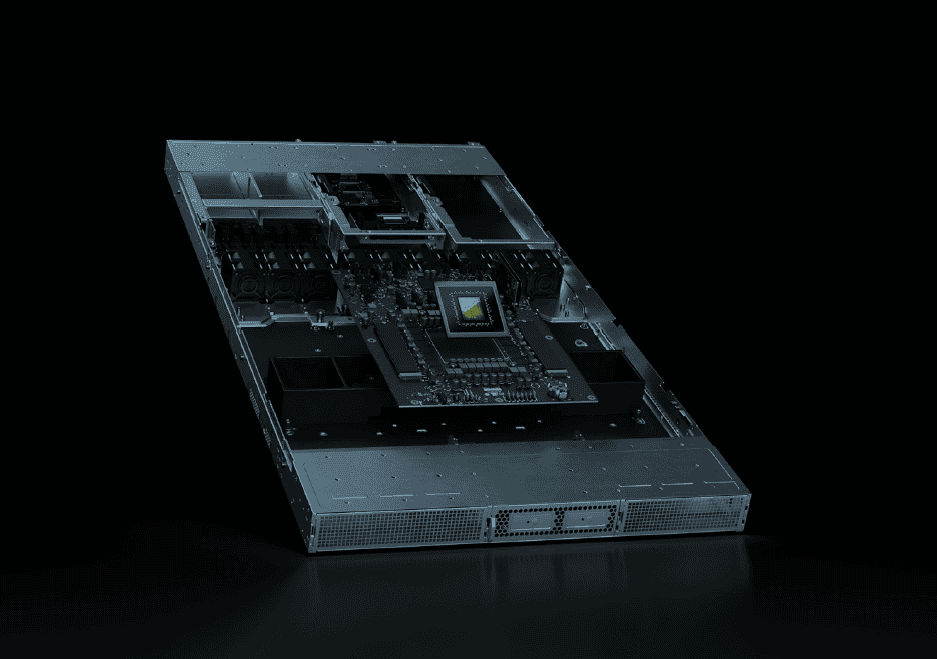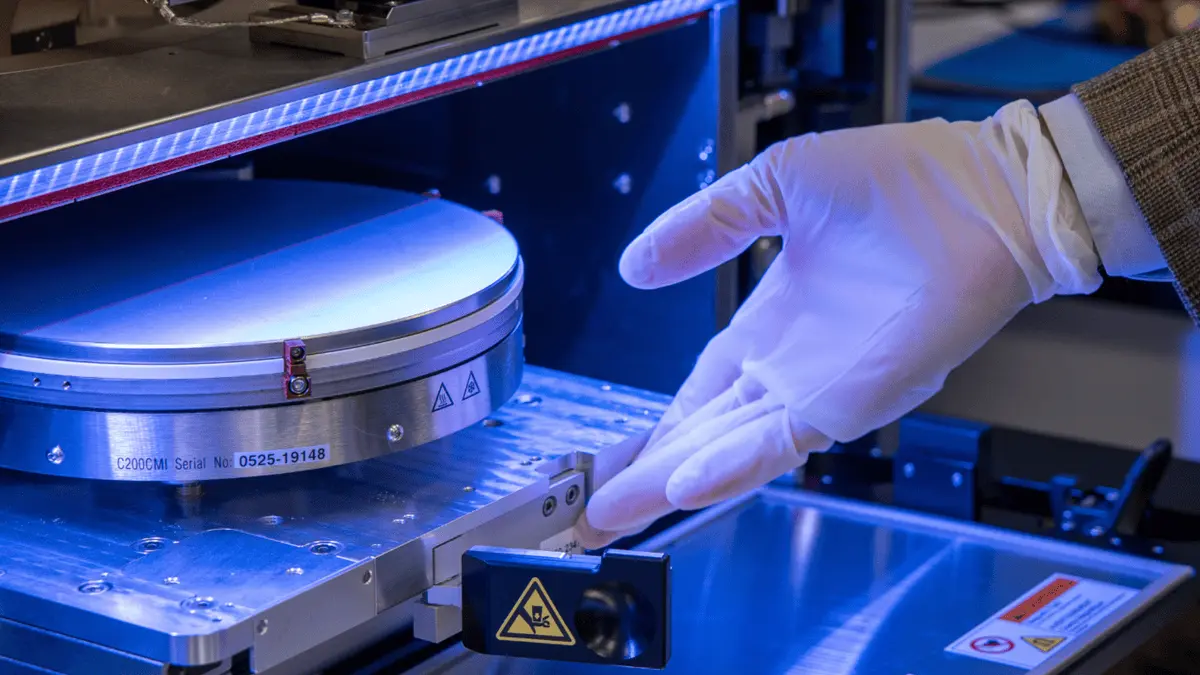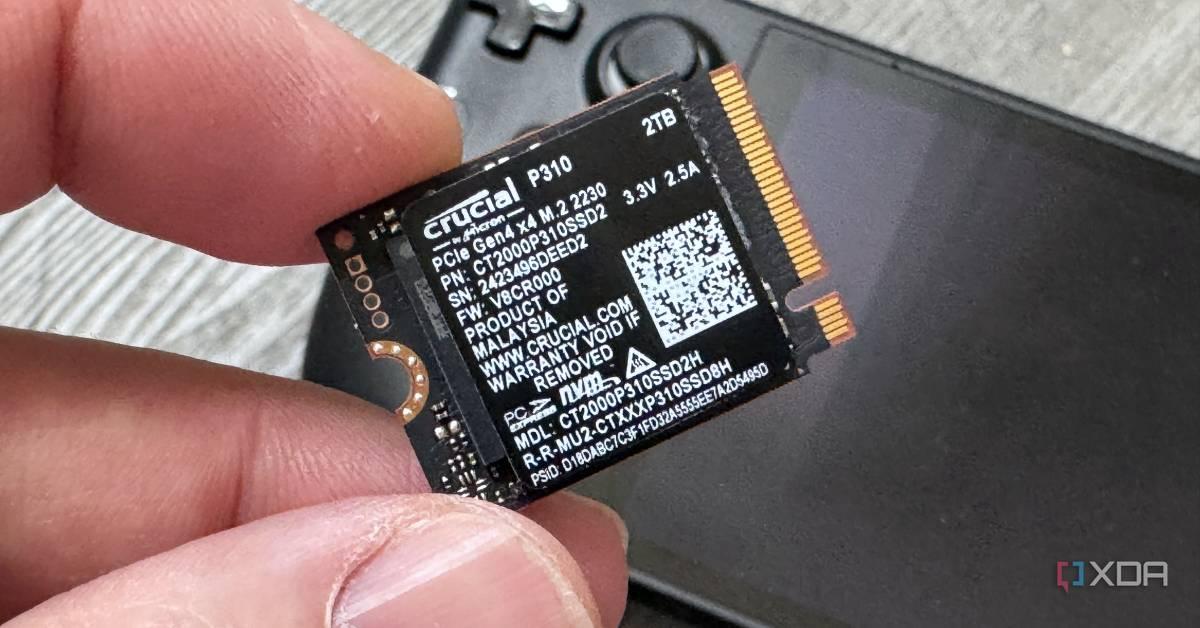Cadence Unveils Millennium M2000 AI Supercomputer with NVIDIA Blackwell GPUs for Advanced Simulations
3 Sources
3 Sources
[1]
Cadence releases new AI supercomputer -- uses Nvidia RTX Pro 6000 GPUs to improve simulation run time
This supercomputer is purpose-built for AI-powered chip design and more. Cadence has announced a new AI supercomputer featuring Nvidia RTX Pro 6000 Blackwell Server Edition GPUs, HGX B200 systems, and CUDA-X tools designed to reduce simulation run time. This system, called the Millennium M2000 Supercomputer, was announced during the company's CadenceLIVE Silicon Valley 2025 event and is an addition to its Millennium Enterprise Platform. According to Cadence, the M2000 is designed for electronic design automation (EDA), system design and analysis (SDA), and drug discovery applications, allowing it to deliver up to 80 times better performance versus CPU-based systems. The company initially specialized in EDA, allowing companies to build chips more efficiently. Some of its customers include Intel, AMD, Apple, and Nvidia, and they use Cadence's tools to help develop next-generation chips. However, it has also expanded in other industries; for example, GE and NASA use its systems for both computational fluid dynamics (CFD) and SDA. It has also entered the life sciences field, with Pfizer and AstraZeneca using its products for drug discovery and molecular modeling. Cadence's use of Nvidia systems, plus its deployment of AI tech within the M2000, allowed it to optimize the M2000 for efficiency. The company says that it can deliver this increased capability while simultaneously reducing the power demand by 20 times across various applications. "The Millennium M2000 Supercomputer will drive the next leap in AI-accelerated engineering by leveraging our massively scalable solvers, dedicated Nvidia Blackwell-accelerated computing, and AI to help designers continue to push the limits of what is possible," said Cadence CEO and President Anirudh Devgan. "Purpose-built for the most advanced AI models of today and tomorrow, the Millennium M2000 Supercomputer delivers unprecedented designer productivity to propel the next generation of AI infrastructure, physical AI systems, and drug discovery." Specialized AI has helped supercharge many industries, and we've seen many companies offer systems designed to run them at different price points. For example, the TinyBox AI accelerator, which uses six RX 7900XTX or RTX 4090 GPUs, starts at $15,000, making it useful for SMEs. On the other end of the spectrum, we have massive AI data centers like Musk's Memphis Supercluster, which is estimated to cost between $3 to $4 billion just for the hardware. The Millennium M2000 sits nicely in the middle of this price range, with each unit estimated to cost $2 million. Aside from no longer needing to contract data centers or hyperscalers for computing time, companies that acquire an M2000 can also ask Cadence to customize it to specifically fit their needs.
[2]
Cadence Teams With Nvidia On Supercomputer Aimed At Faster AI And Engineering Simulations - NVIDIA (NASDAQ:NVDA), Cadence Design Systems (NASDAQ:CDNS)
At its annual flagship user event, Cadence Design Systems, Inc. CDNS on Wednesday announced a significant expansion of its Cadence Millennium Enterprise Platform with the introduction of the new Millennium M2000 Supercomputer featuring Nvidia Corp NVDA Blackwell systems. This supercomputer delivers AI-accelerated simulation across engineering and drug design workloads. The new Cadence Millennium M2000 Supercomputer accelerates the build-out of AI infrastructure, advances physical AI machine design, and pushes the frontiers of drug design. Also Read: These Semiconductor Stocks To Face Least Tariffs Impact Compared To Intel The new supercomputer integrates Cadence's solvers with Nvidia HGX B200 systems, Nvidia RTX PRO 6000 Blackwell Server Edition GPUs, and Nvidia CUDA-X libraries and solver software. This powerful combination delivers dramatic reductions in simulation run times and up to 80X higher performance versus CPU-based systems for electronic design automation (EDA), system design and analysis (SDA), and drug discovery applications. The supercomputer provides a tightly co-optimized hardware-software stack that enables breakthrough performance with up to 20X lower power across multiple disciplines. It accelerates the build-out of AI infrastructure, advances physical AI machine design, and pushes the frontiers of drug design. Cadence also announced the Cadence Tensilica NeuroEdge 130 AI Co-Processor (AICP), which complements any neural processing unit (NPU) and enables end-to-end execution of the latest agentic and physical AI networks on advanced automotive, consumer, industrial, and mobile SoCs. Nvidia pledged $500 billion to build AI supercomputers exclusively in the U.S., drawing swift support from the Trump administration. Price Actions: NVDA stock is up 0.71% to $117.89 at last check Thursday. CDNS is up 0.59%. Read Next: Nvidia, Broadcom Lead Fund Manager Buys Even As Semiconductor Sector Cools: Analysts Image via Shutterstock CDNSCadence Design Systems Inc$310.480.69%Stock Score Locked: Want to See it? Benzinga Rankings give you vital metrics on any stock - anytime. Reveal Full ScoreEdge RankingsMomentum73.53Growth72.06Quality68.22Value6.46Price TrendShortMediumLongOverviewNVDANVIDIA Corp$117.830.66%Market News and Data brought to you by Benzinga APIs
[3]
Cadence Unveils Millennium M2000 Supercomputer with NVIDIA Blackwell Systems to Transform AI-Driven Silicon, Systems and Drug Design
Cadence best-in-class simulation software integrated with NVIDIA Blackwell-accelerated compute enables unmatched scale and speed Delivers up to 80X higher performance and 20X lower power Optimized for a broad range of workloads across EDA, system design and drug design At its annual flagship user event, CadenceLIVE Silicon Valley 2025, Cadence (Nasdaq: CDNS) today announced a major expansion of its Cadence® Millennium™ Enterprise Platform with the introduction of the new Millennium M2000 Supercomputer featuring NVIDIA Blackwell systems, which delivers AI-accelerated simulation at unprecedented speed and scale across engineering and drug design workloads. The new supercomputer integrates Cadence's industry-leading solvers with NVIDIA HGX B200 systems, NVIDIA RTX PRO 6000 Blackwell Server Edition GPUs and NVIDIA CUDA-X libraries and solver software. This powerful combination delivers dramatic reductions in simulation run times and up to 80X higher performance versus CPU-based systems for electronic design automation (EDA), system design and analysis (SDA), and drug discovery applications. The supercomputer provides a tightly co-optimized hardware-software stack that enables breakthrough performance with up to 20X lower power across multiple disciplines, accelerating the build-out of AI infrastructure, advancing physical AI machine design and pushing the frontiers of drug design. "The Millennium M2000 Supercomputer will drive the next leap in AI-accelerated engineering by leveraging our massively scalable solvers, dedicated NVIDIA Blackwell-accelerated computing and AI to help designers continue to push the limits of what is possible," said Anirudh Devgan, president and CEO of Cadence. "Purpose-built for the most advanced AI models of today and tomorrow, the Millennium M2000 Supercomputer delivers unprecedented designer productivity to propel the next generation of AI infrastructure, physical AI systems and drug discovery." "From biology to chip design, the world's most complex engineering challenges require simulation at scales and speeds only possible with accelerated computing," said Jensen Huang, founder and CEO of NVIDIA. "Built with NVIDIA Blackwell, CUDA-X and Cadence's computational software, the Millennium M2000 Supercomputer is a new class of infrastructure: an AI factory for science to drive breakthroughs that will transform discovery across disciplines." The next generation of infrastructure AI, physical AI and sciences AI requires sophisticated computational capability in data centers and edge devices. Building upon the success of the Millennium M1 Supercomputer, which delivers breakthrough performance and energy efficiency for high-fidelity computational fluid dynamics (CFD) simulations, the Millennium M2000 Supercomputer harnesses Cadence's broad array of EDA, SDA and molecular software solvers to perform massive simulations that were previously impossible, transforming approaches to semiconductor and 3D-IC design, data center digital twins, drug discovery modeling and other engineering challenges across the hyperscale computing, automotive, data center, and aerospace and defense markets. Advancing Semiconductors and 3D-IC Design The industry's first purpose-built emulator for AI design, the Millennium M2000 Supercomputer combines all the multiphysics capabilities needed to analyze and optimize 3D-IC and advanced packaging designs, including power, thermal, stress/warpage and electromagnetics. This enables superior quality in a fraction of the time, ensuring engineering teams can achieve greater reliability and efficiency in their product development cycles. For example, traditional semiconductor chip-level power integrity simulations are limited to small windows of time. Customers can now deliver simulations in less than a day with one Millennium M2000 Supercomputer that previously would have taken hundreds of CPUs almost two weeks. Accelerating Autonomous System Design The AI infrastructure buildout requires a significant investment in data centers and compute infrastructure. Doing this in an energy- and resource-efficient manner is critical to delivering the next generation of foundation models from AI factories. Digital twins improve operational efficiencies, reduce risk and lower total power consumption. The Millennium M2000 Supercomputer accelerates the design and operation of these data center digital twins and the modeling process required for the racks, boards and equipment that power them. The Millennium M2000 Supercomputer also enables high-accuracy and high-capacity virtual simulations of machines that will embody AI outside of data centers, such as autonomous transportation, drones and robotics. To design these systems effectively, the combination of accelerated compute and computational software unlocks improved designs in a shorter time by delivering virtual wind tunnels that can precisely simulate real-world conditions. Designers of electronic and mechatronic systems can now make crucial decisions in less than a day versus multiple days, saving both time and energy compared to using a CPU-based Top 500 supercomputer cluster with hundreds of thousands of processors. Advancing Life Science Innovation Cadence Molecular Sciences accelerates drug discovery by enabling pharmaceutical customers to perform more simulations in less time with the Millennium M2000 Supercomputer. Cadence's Orion® Molecular Design Platform on Cadence OnCloud, available on the Millennium M2000 Supercomputer, equips researchers with unmatched computational power to speed up the discovery of potential drug candidates and enhance process scalability. As a result, customers can explore more design scenarios and iterations within tighter deadlines, leading to faster innovation and improved product development. Availability and Customer Endorsements The Millennium M2000 Supercomputer is available both in the cloud and as an on-premises appliance. Multiple customers have provided endorsements, including Ascendance, Boom Supersonic, MediaTek, Supermicro and Treeline Biosciences, which can be viewed in the quote sheet.
Share
Share
Copy Link
Cadence has announced the Millennium M2000 Supercomputer, featuring NVIDIA Blackwell GPUs, designed to accelerate AI-driven simulations for chip design, system analysis, and drug discovery. The system promises up to 80X performance improvement over CPU-based systems.

Cadence Introduces Millennium M2000 AI Supercomputer
Cadence Design Systems has unveiled its latest innovation in AI-accelerated computing, the Millennium M2000 Supercomputer, at its annual CadenceLIVE Silicon Valley 2025 event. This new addition to the Cadence Millennium Enterprise Platform integrates NVIDIA's cutting-edge Blackwell systems to deliver unprecedented performance in simulation and design tasks across multiple industries
1
2
3
.Advanced Hardware Integration
The Millennium M2000 Supercomputer boasts an impressive array of NVIDIA components:
- NVIDIA HGX B200 systems
- NVIDIA RTX PRO 6000 Blackwell Server Edition GPUs
- NVIDIA CUDA-X libraries and solver software
This hardware configuration, combined with Cadence's industry-leading solvers, enables the M2000 to achieve up to 80 times higher performance compared to CPU-based systems while reducing power consumption by up to 20 times
1
3
.Applications Across Multiple Industries
The M2000 is designed to cater to a wide range of applications:
- Electronic Design Automation (EDA)
- System Design and Analysis (SDA)
- Drug Discovery
This versatility makes it an invaluable tool for companies in the semiconductor, automotive, aerospace, defense, and pharmaceutical industries
2
3
.Advancing Semiconductor and 3D-IC Design
In the realm of chip design, the M2000 offers significant improvements:
- Enables comprehensive multiphysics analysis for 3D-IC and advanced packaging designs
- Reduces simulation time for chip-level power integrity from two weeks to less than a day
- Improves reliability and efficiency in product development cycles
3
Accelerating Autonomous System Design
The M2000 plays a crucial role in developing AI infrastructure and autonomous systems:
- Accelerates the design and operation of data center digital twins
- Enables high-accuracy virtual simulations for autonomous transportation, drones, and robotics
- Allows designers to make crucial decisions in less than a day, compared to multiple days on traditional systems
3
Related Stories
Advancing Life Science Innovation
In the pharmaceutical sector, the M2000 offers significant advantages:
- Accelerates drug discovery processes
- Enables more simulations in less time using the Orion Molecular Design Platform
- Allows researchers to explore more design scenarios and iterations within tighter deadlines
3
Industry Impact and Partnerships
The introduction of the Millennium M2000 Supercomputer has garnered attention from industry leaders:
"The Millennium M2000 Supercomputer will drive the next leap in AI-accelerated engineering," said Anirudh Devgan, president and CEO of Cadence
3
.NVIDIA's founder and CEO, Jensen Huang, added, "Built with NVIDIA Blackwell, CUDA-X and Cadence's computational software, the Millennium M2000 Supercomputer is a new class of infrastructure: an AI factory for science to drive breakthroughs that will transform discovery across disciplines"
3
.Market Positioning and Pricing
The Millennium M2000 is positioned as a mid-range solution in the AI supercomputer market:
- Estimated cost: $2 million per unit
- Compares to lower-end solutions like the TinyBox AI accelerator ($15,000)
- Contrasts with massive AI data centers like Musk's Memphis Supercluster ($3-4 billion)
1
This pricing strategy makes the M2000 accessible to a wide range of companies while offering customization options to meet specific needs.
References
Summarized by
Navi
[1]
Related Stories
Cadence and NVIDIA Expand Partnership to Accelerate AI-Driven Engineering and Scientific Innovation
20 Mar 2025•Technology

TSMC and Cadence Partner to Advance AI-Driven Chip Design and 3D IC Solutions
26 Sept 2024

NVIDIA Unveils NVLink Fusion: Enabling Custom AI Infrastructure with Industry Partners
19 May 2025•Technology

Recent Highlights
1
OpenAI releases GPT-5.2 AI model after code red memo targets Google's Gemini 3 threat
Technology

2
Disney invests $1 billion in OpenAI, licenses 200+ characters for Sora AI video generator
Technology

3
OpenAI faces wrongful death lawsuit after ChatGPT allegedly fueled murder-suicide tragedy
Policy and Regulation





